After Juneau, our ship took us to Glacier Bay, an area that just 250 years ago was all glacier and no bay. 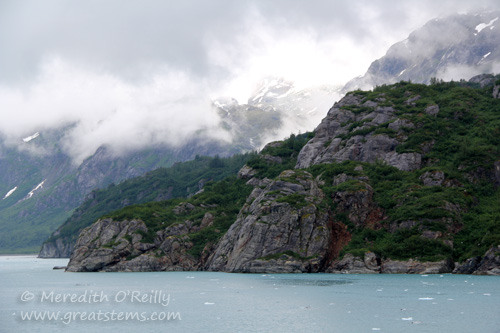
The massive river of ice reached its maximum extent by 1750, gouging the land as it moved along, and within 45 years it had melted back 5 miles, creating Glacier Bay. The glacier continued to retreat north, and what remain (now 65 miles into the bay) are several smaller tidewater glaciers flowing from mountain to sea.
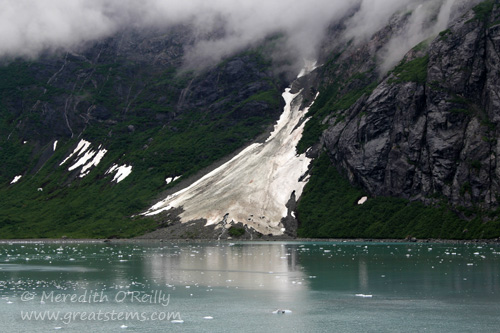
The bay itself is filled with cold, nutrient-rich water and abundant marine life. Surrounding it are young forests, able to grow with the departure of massive ice, though of course pockets remain even throughout summer.
The bay’s tidewater glaciers are accessible only by plane or boat. Perhaps the most impressive is Margerie Glacier, seen in this panoramic image from my husband (click to enlarge). This glacier is about 1-mile wide, 21-miles long, and at its face 250 feet above the water (another 100 feet of the glacier extends down into the water). The glacier flows into the Tarr Inlet of the West Arm of the bay.
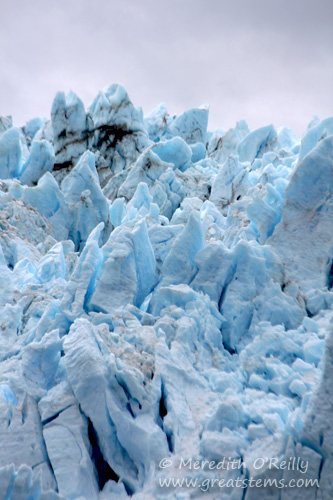
In areas of pure compressed snow and ice, the result was a breathtaking blue color that I couldn’t get enough of.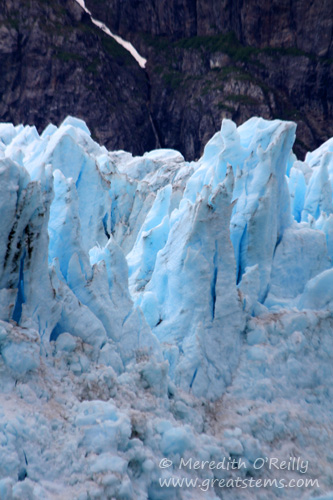
I also loved the jagged ice peaks, an effective contrast to the soothing colors.
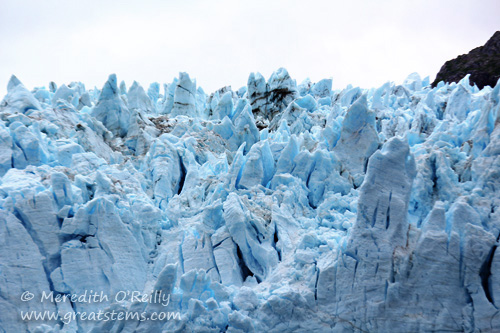
Such jaggedness is not something one usually pictures when glaciers are typically described as slow moving rivers of ice. But there they are, formed as the ice fractures time and again.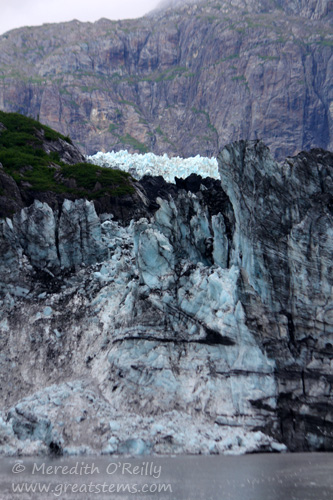
As much as I loved the blue, even the patterns of debris-rich ice were beautiful.
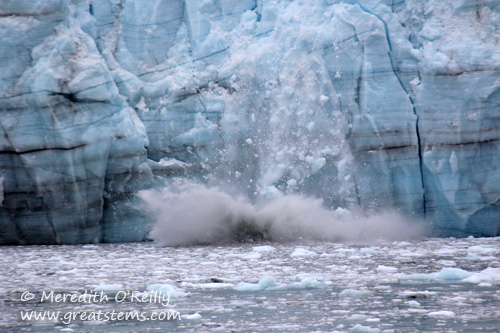 Calving is the sudden breaking away of ice from a glacier, forming icebergs and the like. Margerie Glacier calves actively all year long. Sometimes, falling ice might simply be small chunks, and by that I mean ones the size of Volkswagon Beetles or school buses.
Calving is the sudden breaking away of ice from a glacier, forming icebergs and the like. Margerie Glacier calves actively all year long. Sometimes, falling ice might simply be small chunks, and by that I mean ones the size of Volkswagon Beetles or school buses.
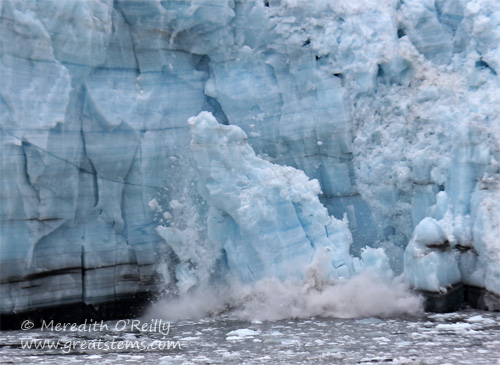
This larger chunk, on the other hand, was about 80 feet tall, the size of an 8-story building. Large ice sections produced massive splash and impressive waves.
Here’s the full sequence of shots as the chunk fell away.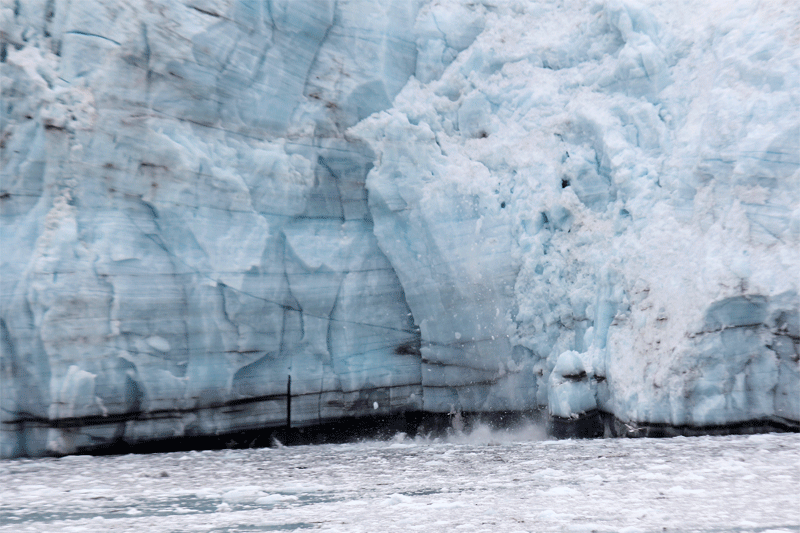
I wish I could have added in sound effects. Cracking sounds, teasers of potential calving, are like rifle shots — loud and crisp. But an actual fall of ice is a thunderous roar combined with loud splashing and waves.
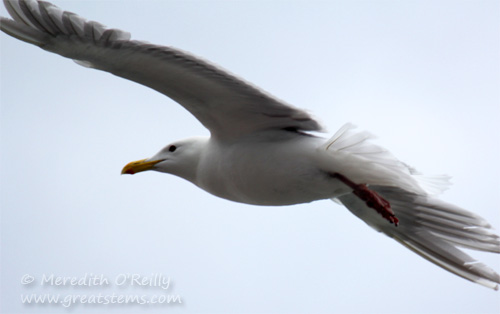
Where the glacier dropped ice with a big splash and also where the propellers from our ship churned up water, sea gulls, like this Glaucous-winged Gull, flocked to take advantage of the disturbed fish and other marine life coming closer to the surface. Note the gray wing tips and orange feet as it flies.
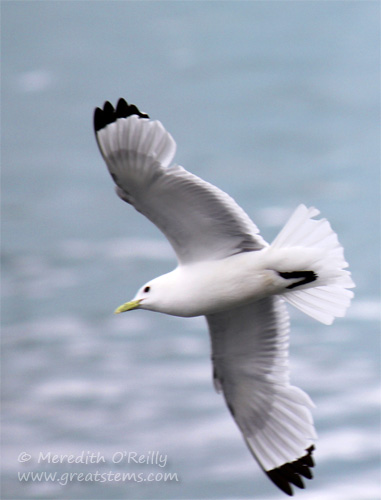
The Black-legged Kittiwake, on the other hand, has black wingtips and, of course, black legs. Many Kittiwakes joined their gray-tipped gull cousins as they foraged the cold waters for food.
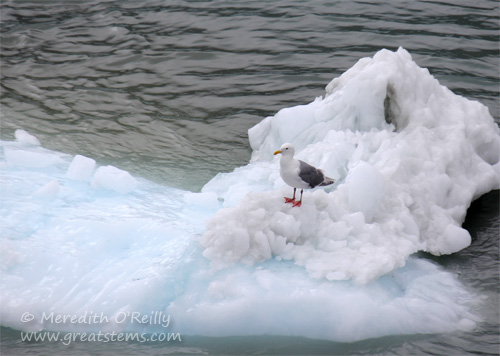
In down time, the gulls rested on the floating ice chunks and preened their feathers. They are able to do this without frostbite to their feet, thanks to a remarkable circulatory arrangement, called a countercurrent heat exchange system, which minimizes temperature differences between the feet and the ice. The arteries and veins in the birds’ legs and feet are very near each other. This means that arterial blood from the body’s core is already cooled by the time it reaches the feet, while cooler veins are warmed by the arterial blood before it returns into the body. Pretty cool, eh — literally and figuratively.
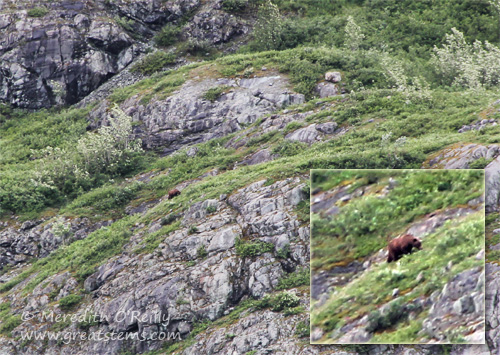 As we headed to other glaciers, we spotted this Grizzly Bear walking up a hill. From the ship, it was a mere dot and almost impossible to see without a zoom lens or binoculars.
As we headed to other glaciers, we spotted this Grizzly Bear walking up a hill. From the ship, it was a mere dot and almost impossible to see without a zoom lens or binoculars.
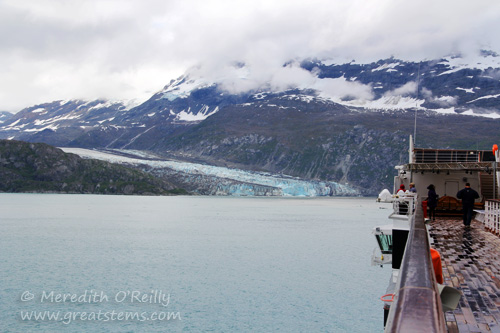 Lamplugh Glacier, 8-miles long and about 3/4-mile wide, is another glacier in the West Arm of the bay.
Lamplugh Glacier, 8-miles long and about 3/4-mile wide, is another glacier in the West Arm of the bay.
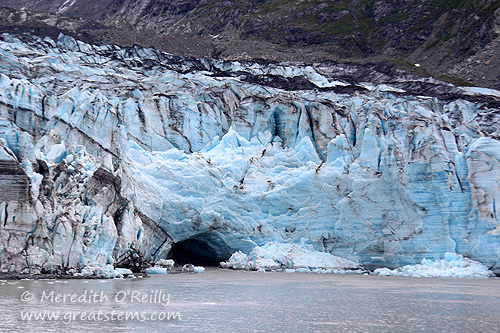
It had a large glacial cave, fascinating and beautiful in its own right.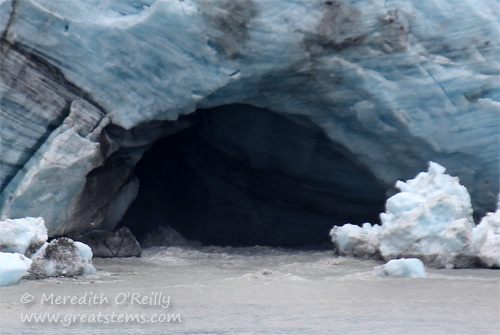
Inside the cave, melting ice flowing through cracks in the glacier created a fast-flowing stream.
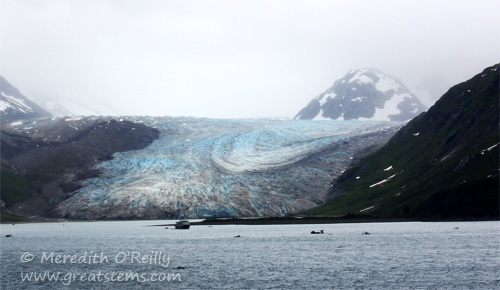
Another beauty was Reid Glacier, also found on the western arm of the bay.
I’m very grateful for the chance to see these amazing glaciers, as 95 percent of the 100,000 glaciers found in Alaska are actively thinning or retreating at unprecedented rates due to climate change. I wonder whether Alaska’s glaciers will even exist a few decades from now.
The remainder of the day and evening we traveled toward Sitka, our next port stop.

Shawn and I went to Yellowstone specifically because I said it was long overdue for a catastrophe; Alaska is also on our list for the same reason.
We had the same feelings about Yellowstone, Katina — that was our primary destination last year, in fact. I recommend you plan your Alaskan trip soon!
Looks like a great trip! Alaska is so amazing! There’s so much wildlife. I was especially surprised to see so many eagles. I can’t wait to go back again someday.
Me, too, Ally. I want to go back and spend some serious time exploring — hiking, camping, kayaking. We barely got a glimpse of it doing the cruise thing — but that was a larger family event and definitely a unique vacation unto itself.
Pingback: Alaska: Sitka, Sea Otters, and the Sound | Great Stems
I love reading your travel posts, Meredith. Those glaciers are beautiful but forbidding. I look forward to reading more. Keep ’em coming.
It’s interesting how deceiving those glaciers are — from a distance (at sea level) you really can’t tell much about them. Up close, they are shockingly beautiful.